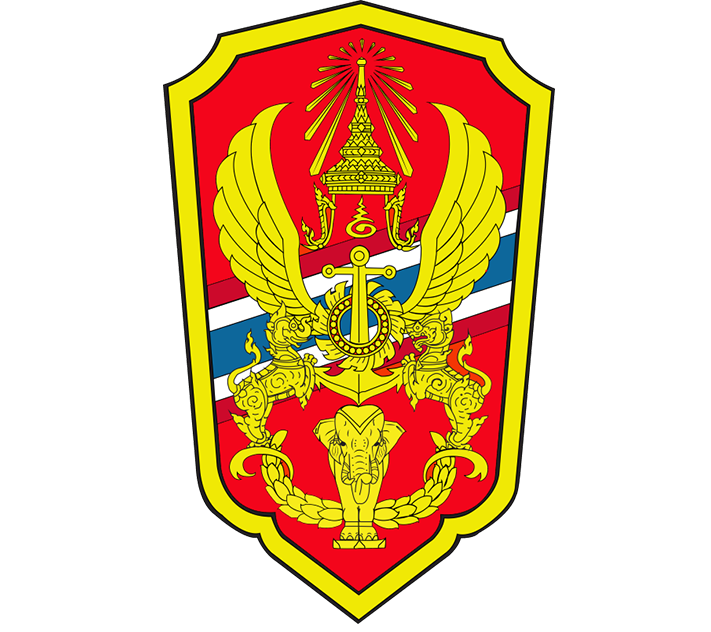เรื่อง: แนวทางการพัฒนาคู่มือการปฏิบัติการร่วมกองทัพไทย
|
|
หมวดหมู่:
|
งานวิจัย
|
มิติ:
|
มิติการทหาร/Military
|
พื้นที่/ขอบเขต:
|
ภายในประเทศ/Domestic/Local
|
ผู้เขียน:
|
นักศึกษาวิทยาลัยเสนาธิการทหาร รุ่นที่ ๖๕ (หมู่อินทรี)
|
หน่วยงานเจ้าของ:
|
วิทยาลัยเสนาธิการทหาร
|
ปีที่พิมพ์:
|
2567
|
จำนวนหน้า:
|
123
|
การเปิดเผยข้อมูล:
|
สาธารณะ
|
|
บทคัดย่อ:
บทคัดย่อ
เรื่อง
: แนวทางการพัฒนาคู่มือการปฏิบัติการร่วมกองทัพไทย
โดย
: นักศึกษาหลักสูตรวิทยาลัยเสนาธิการทหาร รุ่นที่ ๒๕
อาจารย์ที่ปรึกษาเอกสารวิจัย :
พลตรี
(คมศักดิ์ เจียมวัฒนาเลิศ)
มิถุนายน ๒๕๖๗
พันเอก
(เทพฤทธิ์ ภักดีกุล)
มิถุนายน ๒๕๖๗
ในสภาวการณ์ปัจจุบันภัยคุกคามด้านความมั่นคงมีความแตกต่างจากเดิม และมีความซับซ้อน เพิ่มมากขึ้น จากการเปลี่ยนแปลงทางด้านสิ่งแวดล้อม สังคม และเทคโนโลยี ทุกประเทศทั่วโลกพัฒนา แนวทางต่าง ๆ เพื่อป้องกันและแก้ไขผลกระทบจากภัยคุกคามเหล่านั้น ประเทศไทยมีกองทัพไทย เป็นหน่วยงานความมั่นคงหลักในการรับมือกับภัยคุกคามด้านความมั่นคง ร่วมกับภาครัฐและเอกชน การปฏิบัติการร่วมของกองทัพไทย จึงเป็นเครื่องมือสำคัญที่ใช้ในการรับมือภัยคุกคามด้านความมั่นคง ร่วมกันของหน่วยงานในประเทศ หลักนิยมการปฏิบัติการร่วมกองทัพไทย ได้ถูกจัดทำขึ้น ในปี พ.ศ. ๒๕๕๙ แต่เป็นเพียงฉบับร่างเพื่อตรวจสอบยังไม่มีการนำไปทดลองฝึก และประกาศใช้ ตามกระบวนการพัฒนาหลักนิยม การวิจัยครั้งนี้มีวัตถุประสงค์เพื่อศึกษาปัจจัยองค์ประกอบที่สำคัญที่เกี่ยวข้องต่อการปฏิบัติการร่วม กองทัพไทย และเพื่อเสนอแนวทางการพัฒนาคู่มือการปฏิบัติการร่วมกองทัพไทย โดยใช้หลักนิยม การปฏิบัติการร่วมกองทัพไทย ปี พ.ศ. ๒๕๕๙ ดังกล่าวเป็นหลักในการศึกษา เปรียบเทียบกับหลักนิยม การปฏิบัติการร่วมกองทัพสหรัฐอเมริกา ปี ค.ศ. ๒๐๑๗ ผลการศึกษาพบว่าเนื้อหามีความแตกต่าง ที่สำคัญ ได้แก่ เนื้อหาของหลักนิยมการปฏิบัติการร่วมกองทัพสหรัฐอเมริกา มีการอธิบายบทบาทหน้าที่ (Role and Function) ของกลาโหมสหรัฐอเมริกา และโครงสร้าง ภารกิจหน่วยและหน้าที่ของ ผู้บังคับบัญชาและฝ่ายเสนาธิการ เพื่อใช้เมื่อมีการปฏิบัติการร่วม เครื่องมือที่ใช้ในการวิจัยครั้งนี้ ได้แก่ การสัมภาษณ์เชิงลึก (In-Dept Interview) และการสนทนากลุ่ม (Focus Group) โดยกลุ่มประชากร เป็นผู้เชี่ยวชาญด้านการปฏิบัติการร่วม และปฏิบัติงานเกี่ยวข้องกับการปฏิบัติการร่วมกองทัพไทย ผลการสัมภาษณ์พบว่ากลุ่มประชากรทุกท่านเห็นด้วยว่าปัจจัยองค์ประกอบสำคัญทั้ง ๗ ปัจจัย มีความสำคัญต่อการพัฒนาหลักนิยมการปฏิบัติการร่วม นอกจากนี้ ยังให้ข้อเสนอแนะในการเพิ่มมิติ การปฏิบัติการทางทหารขึ้น ๒ มิติ ได้แก่ มิติด้านไซเบอร์ (Cyber Domain) และมิติด้านอวกาศ (Space Dornain) เพื่อรองรับภัยคุกคามในสภาวการณ์ปัจจุบัน การวิจัยครั้งนี้ให้ข้อเสนอแนะแนวทางใน การพัฒนาคู่มือการปฏิบัติการร่วม ให้มีความชัดเจนของโครงสร้าง โดยควรปรับเพิ่มเนื้อหาหลักนิยมการปฏิบัติการร่วมกองทัพไทย บทบาทและหน้าที่ตามภารกิจของหน่วยงานและผู้บังคับบัญชารวมถึง ฝ่ายเสนาธิการ เพื่อให้สามารถใช้เป็นแนวทางการปฏิบัติในการปฏิบัติการร่วมของกองทัพไทยต่อไป
คำสำคัญ : กองทัพไทย, การปฏิบัติการร่วม, หลักนิยมการปฏิบัติการร่วม
abstract:
ABSTRACT
Subject : Guidelines for developing a Joint Operations manual for the Royal Thai Armed Forces.
By
: Joint War College Class 65
Research Advisors:
Major General
(Komsak Jieamwattanalert)
June 2024
Colonel
(Teparit Bhakdikul)
June 2024
In the current environment, security threats are different from the past and are becoming increasingly complex due to changes in the environment, society, and technology. All countries around the world are developing various approaches to prevent and mitigate the impact of these threats. Thailand has the Royal Thai Armed Forces as its main security agency to deal with security threats, together with the government and private sectors. Joint Operations of the Royal Thai Armed Forces are therefore an important tool used to jointly address security threats by agencies within the country. The Joint Operations Doctrine of the Royal Thai Armed Forces was drafted in 2016, but it is only a draft for review and has not yet been tested, trained, and promulgated according to the doctrine development process. This research aims to study the key factors related to the joint Operations of the Royal Thai Armed Forces and to propose a guideline for developing a joint Operations manual for the Royal Thai Armed Forces. The Joint Operations Doctrine of the Royal Thai Armed Forces, B.E. 2559 is used as the basis for the study and compared with the Joint Operations Doctrine of the United States Armed Forces, 2017. The results of the study found that there are significant differences in the content, including the content of the Joint Operations Doctrine of the United States Armed Forces, which explains the roles and functions of the United States Department of Defense and the structure, unit missions, and duties of commanders and staff for use in joint operations. The research tools used in this study were in-depth interviews and focus groups. The participants were experts in joint operations and worked on joint operations of the Royal Thai Armed Forces. The results of the interviews found that all participants agreed that the seven key factors are important for the development of joint operations doctrine. In addition, they also suggested adding two more dimensions of military operations: the cyber domain and the space domain to cope with threats in the current situation. This research suggests guidelines for developing a joint operation manual by adjusting the content of the Joint Operations Doctrine of the Royal Thai Armed Forces to clearly define the structure, roles, and responsibilities according to the missions of the agencies and commanders, including the staff, to be used as guidelines for the conduct of joint operations of the Royal Thai Armed Forces.
Keywords: Royal Thai Armed Forces, Joint Operations, Joint Operations Doctrine


